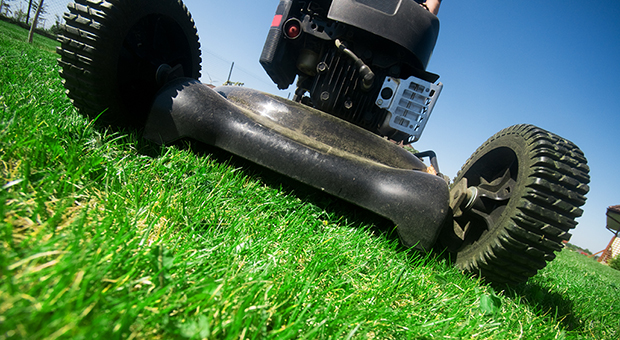Considering the 80 million home lawns in the country, there are a lot of people buying lawn mowers.
How you choose between rotary, reel and electric models has to do with your situation and preferences, said Alec Kowalewski, Oregon State University Extension turfgrass specialist. All three have their pros and cons.
Rotary and electric mowers, which have one blade, cut like weed wackers with the blade spinning in a circle. Reel (push) mowers, on the other hand, are designed with two blades that slide across each other and cut like scissors. Both do a good job, Kowalewski said.
“The reel mower is going to be a cleaner cut,” he said. “But that doesn’t have that big of an effect on grass. It takes a really dull rotary mower to make much of a difference. A sharp rotary mower will produce just as good of grass as a reel mower.”
The lesson is to keep mower blades sharp, no matter the type. Rotary blades are easier to maintain because the blades detach. Reel mowers, on the other hand, don’t have removable blades so they have to be taken to a professional for sharpening.
Mulching mowers, which tend to be more expensive than others, are also on the market. They cut grass into smaller pieces than other mowers, which makes leaving clippings behind an easy task. But any mower will do the same if the lawn is cut often and left tall.
“Instead of bagging up clippings, consider leaving them where they fall, Kowalewski said. “They break down quickly and resupply much-needed nitrogen. The more often you mow, the easier this is to do. Don’t, however, leave clumps of clippings sitting on the lawn.”
When you buy a mower, he recommends doing some research and buying the best you can afford. Check to see if the brand you’re considering has a commercial version. That quality translates to the homeowner models. There are many on the market, but a few recommended brands are Toro and Honda and Jacobsen.
It’s clear there are a lot of choices when it comes to lawn mowers. Kowalewski breaks down some of the pros and cons of each type.
Rotary mower
Pros:
- Sturdy machines that last a long time.
- Goes right over the top of leaves and small twigs.
- Can mow quickly, especially the self-propelled models.
- Easier to use in large areas.
Cons:
- Noisy
- Produces some amount of carbon dioxide.
- Can’t get down to a low mowing height. However, Kowalewski notes that perennial ryegrass and fescue, the two most common grasses in western Oregon, should not be cut low. Keeping them 2 to 3 inches tall is optimum for healthy growth, which means fewer weeds. Older lawns that have transitioned to colonial or creeping bentgrass can be mowed lower, so a reel mower would be good for those types of grasses.
Reel mower
Pros:
- Quiet
- If you’re concerned about carbon emissions, reel mowers are the way to go. However, Kowalewski cited recent studies that show grass has the potential to sequester up to four times the amount of carbon dioxide that is produced by mowing. All plants remove carbon dioxide from the air and use it for new growth, including roots that decompose into organic matter and fix carbon in the soil.
Cons:
- Harder to push, though newer models are much lighter and easier to handle than older ones.
- Doesn’t go over twigs and leaves very well.
- Not good for uneven terrain.
- Best for small lawns.
Electric mower
Pros:
- Moderately quiet
- No need to deal with gas and oil.
Cons:
- Only operates so long before battery dies on battery-operated models.
- Must deal with cords on plug-in models, though Kowalewski points out, “My grandfather had an electric mower for years and years and years and he never ran over a cord.”
For more information about caring for lawns, refer to Extension’s publications Practical Lawn Care for Western Oregon, Fertilizing Lawns and Practical Lawn Establishment and Renovation. There’s also a video on Integrated Pest Management for Turfgrass.

